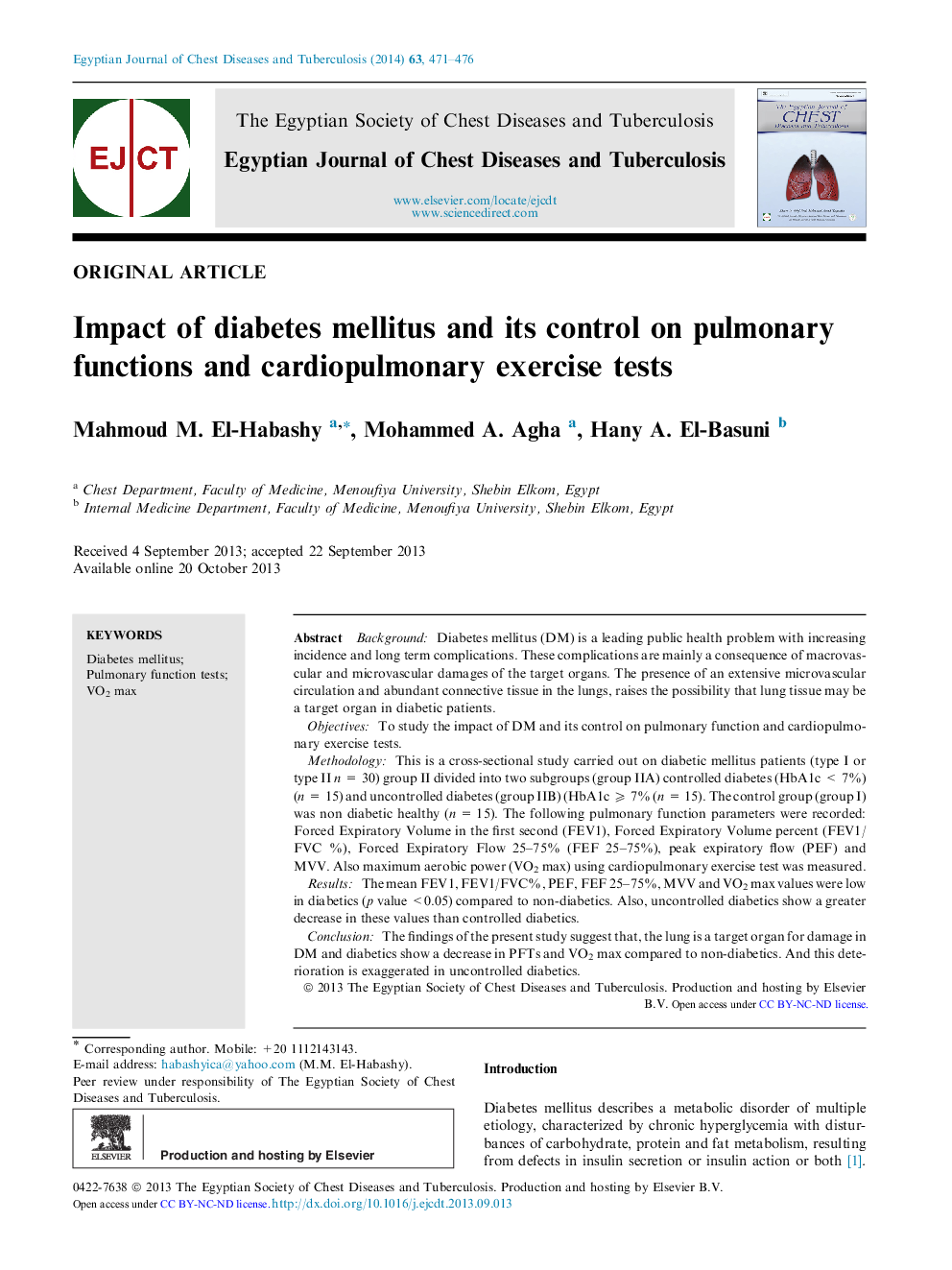| Article ID | Journal | Published Year | Pages | File Type |
|---|---|---|---|---|
| 3400362 | Egyptian Journal of Chest Diseases and Tuberculosis | 2014 | 6 Pages |
BackgroundDiabetes mellitus (DM) is a leading public health problem with increasing incidence and long term complications. These complications are mainly a consequence of macrovascular and microvascular damages of the target organs. The presence of an extensive microvascular circulation and abundant connective tissue in the lungs, raises the possibility that lung tissue may be a target organ in diabetic patients.ObjectivesTo study the impact of DM and its control on pulmonary function and cardiopulmonary exercise tests.MethodologyThis is a cross-sectional study carried out on diabetic mellitus patients (type I or type II n = 30) group II divided into two subgroups (group IIA) controlled diabetes (HbA1c < 7%) (n = 15) and uncontrolled diabetes (group IIB) (HbA1c ⩾ 7% (n = 15). The control group (group I) was non diabetic healthy (n = 15). The following pulmonary function parameters were recorded: Forced Expiratory Volume in the first second (FEV1), Forced Expiratory Volume percent (FEV1/FVC %), Forced Expiratory Flow 25–75% (FEF 25–75%), peak expiratory flow (PEF) and MVV. Also maximum aerobic power (VO2 max) using cardiopulmonary exercise test was measured.ResultsThe mean FEV1, FEV1/FVC%, PEF, FEF 25–75%, MVV and VO2 max values were low in diabetics (p value <0.05) compared to non-diabetics. Also, uncontrolled diabetics show a greater decrease in these values than controlled diabetics.ConclusionThe findings of the present study suggest that, the lung is a target organ for damage in DM and diabetics show a decrease in PFTs and VO2 max compared to non-diabetics. And this deterioration is exaggerated in uncontrolled diabetics.
